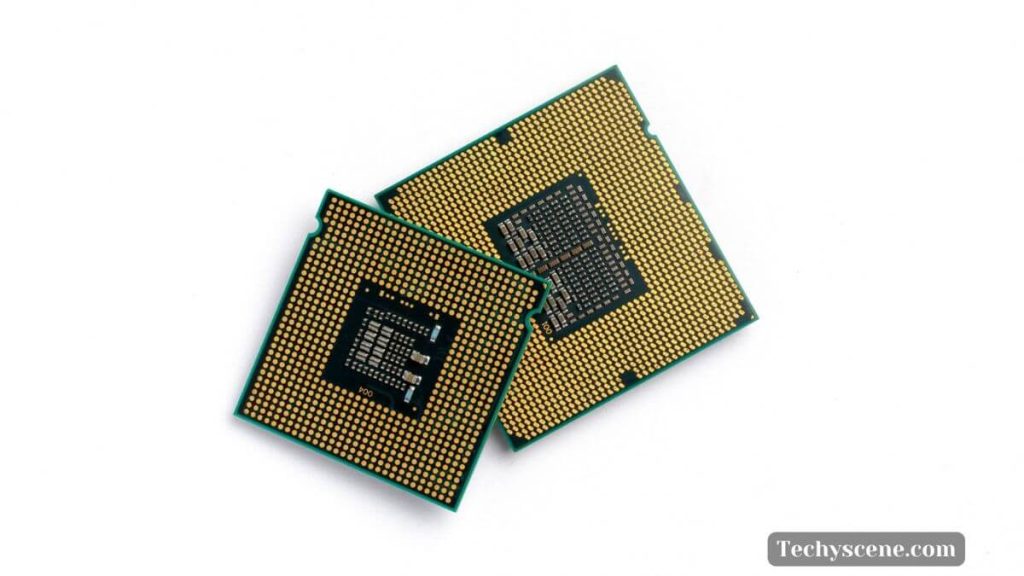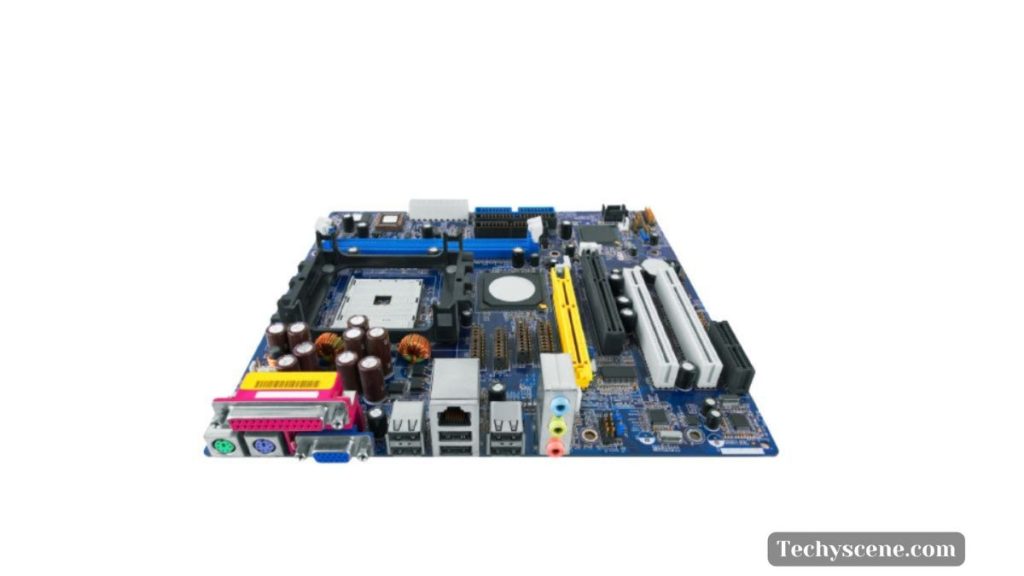In the wild world of computer gear, the motherboard and the CPU are like the OGs, that lay the beats for your digital ride.
When you fire up your rig, this all-important Power-On Self-Test (POST) kicks off, ensuring all your hardware works well together and is ready to rock.
But you know what folks often wonder, whether you are a tech geek or just getting started: Can a motherboard POST without a CPU?
In this post, I’m going to go deep into what goes down when your computer fires up. I am going to break down how the motherboard and CPU tag team and spill the beans on their give-and-take. Most importantly, I’m going to answer the burning question: Can your computer’s motherboard jam through its POST routine without its main brain, the CPU?
You can learn more about bottlenecks between a motherboard and CPU in our detailed article.
Will a Motherboard POST Without a CPU?

A motherboard cannot initiate a Power-On Self-Test (POST) without a CPU installed. The CPU (Central Processing Unit) is an essential computer system component responsible for executing instructions and performing calculations.
Without a CPU, the motherboard ain’t got the juice it needs to pull off those fancy moves for the POST (Power-On Self-Test).
The CPU’s like the big boss in charge here, taking that firmware code tucked away in the motherboard’s BIOS (Basic Input/Output System) and making it happen. This code’s the real deal, telling the hardware to wake up and do its thing, like checking RAM, sizing up the graphics cards, and firing up those storage devices. You need that CPU to make the motherboard dance to the POST tune.
Without the CPU, the motherboard is essentially like a conductor without an orchestra. It may possess all the hardware components, but it needs the guidance of the conductor to ensure its harmonious operation.
Consequently, the POST process cannot proceed as intended, making it highly improbable for a motherboard to perform a POST without a CPU successfully.
There might be some rare situations where a computer does its thing without a CPU, but that’s not your everyday computer setup. In the real world, that CPU is your ride-or-die buddy, especially when your computer’s firing up during that POST and boot-up process.
The Significance of a CPU in the Power-On Self-Test (POST)
To comprehend the essential role of a central processing unit (CPU) in the Power-On Self-Test (POST) process, we must delve into the intricate mechanics of this pivotal phase in computer boot-up.
1. Interpreting Firmware Code
At the heart of the POST process lies the motherboard’s BIOS (Basic Input/Output System), which contains firmware consisting of instructions required to initialize and test various hardware components.
The CPU serves as the interpreter of this firmware code. It reads the instructions, processes them, and directs the hardware accordingly.
2. Orchestrating Hardware Checks
The BIOS code instructs the CPU to perform checks and initializations. These checks include verifying the integrity of RAM, ensuring the proper functioning of the graphics card, initializing storage devices, and more.
These crucial hardware components would remain dormant without the CPU to execute these instructions.
3. Coordinating Component Communication
The CPU is also pivotal in facilitating communication between different hardware components. It acts as the central coordinator, ensuring that data flows smoothly between the RAM, storage devices, graphics card, and other peripherals. This coordination is vital for a system to function seamlessly.
4. Loading the Operating System
After completing the hardware checks, the CPU’s role extends to loading the operating system. It locates the bootloader, initiates the OS loading process, and hands control over the operating system once it’s up and running.
Without the CPU’s intervention, the computer could not transition from the BIOS phase to the operating system.
5. Error Handling
If the POST process encounters any errors or issues during hardware initialization, the CPU handles them. It can display error messages or codes on the screen, allowing you or technicians to diagnose and address hardware problems.
Identifying and resolving issues would be significantly more challenging without the CPU’s involvement.
What Happens If You Start Motherboard Without CPU?

If you attempt to start a motherboard without a CPU (Central Processing Unit), several things can happen:
1. No Display
Most modern motherboards will only display something on the monitor with a CPU installed. The CPU is responsible for processing instructions and generating video signals, so without it, there’s nothing to display on the screen.
2. Error Beeps
Many motherboards have built-in error-reporting mechanisms that produce beep codes to indicate hardware problems. If you try to boot without a CPU, you may hear a series of beeps indicating a CPU-related error.
3. System Failure
The system will likely fail to boot and may not even get past the BIOS/UEFI startup screen. The CPU is essential for initializing the hardware and loading the operating system.
Without it, the motherboard won’t be able to perform these tasks.
4. No Functionality
It will be entirely non-functional even if the system somehow manages to power on without a CPU. You won’t be able to run any software or perform any tasks because the CPU is the core component responsible for executing instructions.
5. Potential Damage
Continuously attempting to start the motherboard without a CPU could potentially damage the motherboard or other components.
CPUs have thermal protection mechanisms; without a CPU, the motherboard may overheat because it won’t be able to control or monitor temperatures properly.
Is Using a Motherboard Without a CPU Safe?
There’s nothing inherently wrong with testing your motherboard without a CPU; it won’t damage the motherboard itself. But, there are crucial caveats to consider. When a motherboard operates without a CPU, it effectively becomes a conductor without an orchestra. It lacks the processing power needed to orchestrate the intricate dance of hardware initialization.
1. No POST Test
One significant consequence is that your computer will not pass the Power-On Self-Test (POST). As we’ve discussed earlier, the POST process checks hardware components, ensures they are working correctly, and initializes system settings.
The POST process can only be completed with a CPU executing these checks and instructions.
2. Potential Risks
While the motherboard won’t be damaged, it might not gracefully handle this situation. It might hang or even crash instead of shutting down or displaying an error message.
In some cases, this can lead to unexpected behavior, and in rare situations, it might cause a short circuit if not appropriately managed. So, while it’s not inherently unsafe for the motherboard, it can be unpredictable and potentially problematic.
3. No Graphics Output
Another important consideration is that most motherboards lack an integrated graphics processing unit (GPU).
This means you won’t see anything on your screen if you attempt to power up the motherboard without a CPU. Your monitor will remain blank because no GPU generates a video signal.
4. Dedicated GPU Dependency
Even if you have a dedicated GPU installed in the PCIe slot, it won’t function without the CPU. The GPU is responsible for rendering high-resolution graphics and processing video.
Without it, you won’t have a source to display pictures and videos, making your computer essentially unable to output visuals.
The Role of the CPU and the Motherboard’s Function
The Role of the CPU
At the core of this symbiotic relationship is the CPU, often referred to as the computer’s brain. Its primary function is executing instructions and processing data, making it the central coordinator of all computing operations. When you interact with your computer, from opening applications to browsing the web, the CPU is the silent workhorse that makes it all possible.
But how does the CPU interact with the motherboard? The motherboard serves as the home and conduit for all hardware components, acting as a hub facilitating communication among them. The CPU takes its place on the motherboard, nestled into a socket designed for a precise fit.
The Motherboard’s Function
As the computer’s central nervous system, the motherboard connects, powers, and coordinates the various hardware components. It features an intricate network of circuits, connectors, and slots that allow data to flow seamlessly between the CPU, RAM, storage devices, graphics cards, and other peripherals.
Additionally, the motherboard houses the BIOS (Basic Input/Output System), a firmware containing essential instructions for hardware initialization and the Power-On Self-Test (POST) process. This is where the CPU comes into play once again, as it interprets and executes these instructions.
The CPU and the motherboard share a symbiotic relationship: the CPU is the computational powerhouse, and the motherboard is the stage on which this power is harnessed and directed. Together, they form the foundation of your computer’s functionality, ensuring it operates smoothly and efficiently.
FAQs
1. Can you POST to BIOS without CPU?
No, except for motherboards with features like Flash BIOS Button or Q-Flash Plus, which permit BIOS flashing via a USB flash drive.
2. Will a Motherboard Turn on With a Dead CPU?
No, a motherboard will not turn on with a dead CPU.
3. Can a Bad CPU Cause No Post?
Yes, a bad CPU can cause no POST (Power-On Self-Test). This happens because the CPU is a critical component responsible for executing the POST process.
4. Which Runs First, POST or BIOS?
The BIOS (Basic Input/Output System) runs first, followed by the POST (Power-On Self-Test). When you power on your computer, the BIOS is the firmware that initializes hardware components and then proceeds to execute the POST, which checks the system’s hardware for errors and prepares it for the operating system to load.
Conclusion
The answer is a resounding no. A motherboard cannot initiate a Power-On Self-Test (POST) without a CPU installed.
The CPU serves as the brain of your computer and is responsible for executing instructions, processing data, and initializing hardware components during the boot-up process. Without the CPU’s presence and functionality, the motherboard is essentially powerless.
So, when you’re assembling a computer or troubleshooting boot issues, always remember that the CPU is a non-negotiable component for your system to spring to life. Its role in the POST process is indispensable; your motherboard remains silent and inactive.